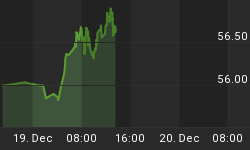We heard the "surprising" news last week that the Japanese economy shrank at an alarming 6.8 percent annualized rate in the three months through June, its biggest quarterly contraction since the 2011 earth quake and tsunami. Proving Japan's greatest national disaster, Abenomics, has failed and the Japanese economy has fallen victim to the scam called Keynesian economics. Defined as the belief that a country can tax, spend, devalue and inflate its way to prosperity.
Since the popping of the BOJ- induced bubble in 1989, Japan has been the most faithful adherent of Keynesian principals. At the onset of the crisis they immediately began on their misguided path with large doses of deficit spending. Instead of allowing the economy to rid itself of bad investments and heal, they continued to prop-up failed business models--creating Zombie banks and an equally Zombie-like economy.
As one lost decade turned into two, in the year 2000, they coupled their fruitless spending efforts with massive amounts of money printing. And despite two decades of low growth, the nation stubbornly held on to the popular Keynesian excuse of "if only"...If only our stimulus was larger, if only we weakened our currency more, if only we kept interest rates lower for longer; economic nirvana would be achieved. Keynesians love to use this counterfactual argument because they believe it cannot be proven wrong--that is until now!
In 2012, Prime Minister Shinzo Abe had a master plan to pull the world's third-biggest economy out of its stagnation. His plan was to deploy, in massive and unprecedented fashion, the strategies of central bank credit creation, currency destruction and debt accumulation. The Japanese doubled down on the great Keynesian experiment, as if Paul Krugman himself was running the economy, they placed the economy on Keynesian steroids. Now, we are beginning to see what an economy looks like when the Keynesian playbook is utilized to its fullest extent.
With a first half economic contraction in the books, many economists are now warning that Japan is poised for yet another recession. Back In June, I warned the reported 6.1 percent GDP growth in Q1 will prove to be temporary because businesses frontloaded capital spending in a move to avoid April's well-anticipated and substantial increase in the consumption tax from 5% to 8%. And because of the asinine belief that growth comes from inflation, Japan's lethargic economy--whose inactivity had previously been blamed on falling prices--slowed dramatically right after prices went up.
Household consumption plummeted at an annualized pace of 19.2 percent from the previous quarter, while private investment sank 9.7 percent. And because of the Japanese battle against deflation, real wages dropped 3.8% year on year in May. Those mismanaging the Japanese economy believe consumption will surge if they can achieve a substantial increase in the CPI. The misguided logic being the Japanese consumer will only spend if they are running in perpetual fear of rising prices.
One of the cornerstones of Abenomics was destroying your currency with the hopes of boosting exports. Ironically, last week the central bank warned over a worsening export and factory output picture. In fact, June showed the worst trade deficit ever in Japan, and a 57 percent rise in the trade deficit for the first half of the year.
And today with a near 250% debt to GDP ratio, it's difficult to argue Japan didn't engage in enough deficit spending. Over the past three years, interest rates on the JGB 10-year note went from 1.5% to .52%. Under its own brand of quantitative easing policy put in place last April, the BOJ now buys 70 percent of all new government bonds issued in markets, as well as other more risky assets. With the JGB market on virtual life support courtesy of the BOJ, it is impossible to argue rates aren't low enough or that the BOJ hasn't monetized enough. They spent, they printed, they taxed; but the Japanese economy is out of gas, and the Keynesians who own this plan are now out of excuses.
The truth is Japan is a perfect example to the counterfactual argument that anemic U.S. growth is the result of a Keynesian plan that was launched half-heartedly.
The United States should heed Japan's economic woes as a warning sign, and a reason to change course while we still have a chance. With U.S. debt to GDP at 105 percent and household debt at over 80 percent, the aggregate amount of our nation's debt is at an all-time high. But unlike Japan we have the overwhelming privilege and responsibility of holding the world's reserve currency.
Obliging other nations to trade and hold U.S. dollars is not written anywhere in the bible. These nations have, for the time being, decided to maintain a holding that is equal to 50 percent of our publicly traded Treasury debt. Losing their confidence in our credit and currency would be devastating to our economy. Japan has no such worries about keeping foreign investors happy because they finance 90 percent of their debt internally.
We have become a country that habitually over-consumes and under-produces. Debt levels have skyrocketed while our demographic and labor force participation conditions are quickly approaching critical mass.
We have to abandon these failed Keynesian policies while there is still time. We must boost our employment to population ratio, deregulate the economy, simplify the tax code, balance the budget, cut expenditures, end the Fed's runaway printing press and allow the free market to set interest rates and asset prices. Only by doing this do we stand a chance of not falling further into Japan's stagflationary nightmare. But if we persist in following the Keynesian counterfactual, our fate will be worse than that of Japan, as the deluge of debt being dumped by our foreign creditors causes the dollar to be dethroned, interest rates to soar and inflation to skyrocket.















